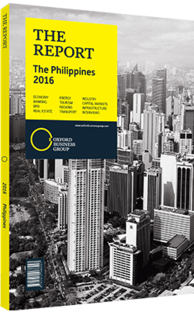China's economic slowdown poses a potential risk to the Philippines economy
Relative insulation from China has been a saving grace for the Philippines since 2014, helping sustain high growth rates as most other South-east Asian economies have slowed. Yet the Philippines will continue to be affected by the developing changes in China.
Global Impact
A crash of the Chinese equity market and a surge in capital flight in the summer of 2015 generated turbulence in capital markets worldwide. The Philippines felt a moderate impact: the peso fell against the dollar by 3.5% during July and August, while the Philippine Stock Exchange equity index lost 6.1%. The lurching of financial markets reflects adjustments to long-developing changes in China and its economic relationships with the world.
The most dramatic change in China has been the sharp slowdown of its construction, building materials and metallurgy industries. Prices of apartments have stopped rising in most cities, and demand for investment properties has fallen off, while globally, lower oil prices have forced oil-exporting countries to slow construction. Prices for building materials and metals have slumped around the world.
These troubles come on top of a decline of China’s competitiveness as costs have risen. Its export engine had already been slowing, from 26% annual average growth of the value of goods exports in 2001-07 to 11.4% in 2008-13 and 6% in 2014. China’s goods exports declined 5.5% year-on-year (y-o-y) in dollar terms in the first eight months of 2015 and goods imports were down 14%. The direct effects of these changes on the Philippines are largely positive. It increasingly attracts manufacturing investment that could have gone to China if its costs were lower. It also benefits from lower import prices for construction materials, which it needs to build offices, apartments and shops for the workers of its rapidly growing business process outsourcing (BPO) industry.
As an energy importer whose exports go mainly to energy-importing countries, the Philippines enjoys large savings and faces very little drag from lower oil prices. Though half of all goods exported from the Philippines go to East Asia, a large portion of those feed into supply chains that end up in North America and Europe. In peso terms, exports of electrical and electronic goods were up 14.3% in 2015, accelerating from 13.3% growth in 2014, according to the Philippine Statistics Authority, as strong demand from the US and Europe outweighed weakness in Asia.
Dangers
There are also drawbacks and dangers for the Philippines from the changes in China. Machinery exports also weakened in January-July 2015, which was likely China-related, and depreciation of the Chinese renminbi – which fell by 5% against the dollar in late July and early August – is expected to put further pressure on exports. Many analysts expect the renminbi to weaken further. Some see a risk of financial crisis in China if a significant portion of private debts go sour and the rapid pace of credit issuance hits a sudden stop. Net credit issuance to non-financial sectors averaged $2.5trn a year in China in 2012-14, well ahead of the $1.8trn annual average in the US, though US GDP in 2014 was two-thirds greater than China’s.
There are concerns that much of China’s bullish credit issuance has been misdirected, funding excessive residential investment then blowing an equity bubble that popped in 2015, fuelling capital flight. China’s foreign exchange reserves fell by $94bn in August 2015, a record for a single month. Some economists have warned that a China crisis could set off a global recession. Others point out that the country’s financial system is relatively insular, and that China accounts for only around one-eighth of global international trade. Optimists see China maintaining high growth rates by accelerating its consumer sectors, pessimists see the country ending its long run of above-par growth. However, neither side is expecting China to return to the pace of import and construction sector growth seen in 2013 and earlier.
You have reached the limit of premium articles you can view for free.
Choose from the options below to purchase print or digital editions of our Reports. You can also purchase a website subscription giving you unlimited access to all of our Reports online for 12 months.
If you have already purchased this Report or have a website subscription, please login to continue.

